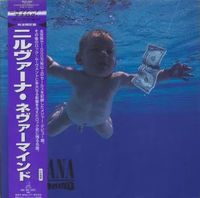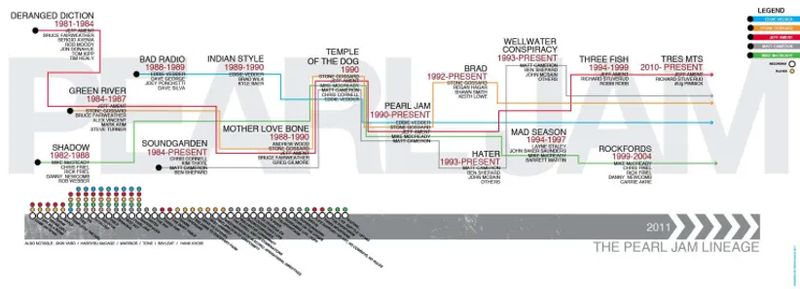Grunge music family tree

Origins and Early History of Grunge
The origins of grunge can be traced to the economic and cultural climate of Seattle during the early 1980s. The city was suffering from economic downturn, which contributed to the disenchanted youth culture that would come to define grunge's ethos. This backdrop of gloom and job scarcity created a fertile ground for the rise of a new, raw sound. Influenced by the punk rock ethos of rebellion and DIY attitudes, as well as by the heavy, sludgy sounds of local bands like the Melvins, the music that began to emerge from Seattle was visceral, raw, and defiantly non-commercial.
Local record label Sub Pop was instrumental in the early growth of grunge. Founded by Bruce Pavitt and Jonathan Poneman in 1986, Sub Pop recorded early releases by key grunge bands like Soundgarden, Mudhoney, and Green River. These bands combined punk's speed and simplicity with heavy metal's power chords and dark themes, all of which Sub Pop captured with their raw, underproduced sound that became a hallmark of early grunge recordings.
Was grunge an actual spontaneous entity? There was a network of musicians but no common musical thread, merely a geograhical identity. Similar explosions have happened elsewhere, Liverpool (twice), Manchester (Madchester), Punk and each time someone invented a buzzword that found it's way into the popular conciousness. It then tips over into a fashion craze and lifestyle choice before the inevitable collapse.
All genres are born to die.
Musically, grunge wasn't that much different to other rock of the day, though Nirvana perfected the loud/soft dynamic that came to characterize the genre.
Evolution and Rise to Fame

The evolution of grunge from a local scene to a national movement began as these bands gained recognition beyond Seattle, aided by Sub Pop’s clever marketing which emphasized the Seattle scene as exotic and distinctive. The label's strategy included sending singles club releases to music critics and staging a showcase of Seattle bands in California that was attended by influential industry figures and media.
However, it was Nirvana's 1991 album "Nevermind," produced by major label DGC Records (a subsidiary of Geffen), that catapulted grunge into the national spotlight. The album’s lead single "Smells Like Teen Spirit" became an anthem for a disaffected generation, and its success pulled other Seattle bands along with it into mainstream recognition, including Pearl Jam, whose debut album "Ten" also saw massive commercial success.
see also Nirvana singles and albums
Major Players
- Nirvana: Kurt Cobain, Krist Novoselic, and Dave Grohl (who joined the band in 1990) were central figures in grunge. Cobain's introspective lyrics and tragic end personify the grunge spirit.
- Pearl Jam: Formed from the remnants of Mother Love Bone after the death of frontman Andrew Wood, Pearl Jam became one of the most enduring acts from the grunge scene, with a sound that was slightly more accessible than that of their peers.
- Soundgarden and Alice in Chains: Both bands offered heavier sounds that leaned more towards metal but were integral in shaping the grunge sound.
- Sub Pop Records: As mentioned, this local label was crucial in the initial push of the grunge scene into the limelight.
here's a detailed timeline for pearl jam that has been doing the rounds...

Landmark Events
The release of Nirvana's "Nevermind" in September 1991, which eventually knocked Michael Jackson's "Dangerous" off the top of the Billboard charts, symbolized the seismic shift in music tastes.
The 1991 documentary film "Hype!" chronicled the rise of the Seattle music scene, cementing its influence and serving as a critical point of reflection for the movement.
The tragic deaths of key figures like Kurt Cobain (1994) and Layne Staley (2002) marked sobering reminders of the scene's darker undercurrents and signaled the end of grunge's most influential period.
Conclusion
Grunge's rapid rise and subsequent influence on fashion, music, and culture at large marked it as one of the defining movements of the 1990s. Though its intense spotlight was relatively short-lived, the legacy of grunge continues to influence artists and bands who resonate with its themes of disillusionment and its gritty, authentic sound. As much a movement born of its unique time and place as of its music, grunge remains a poignant chapter in the history of popular music.
NEXT >> hip hop